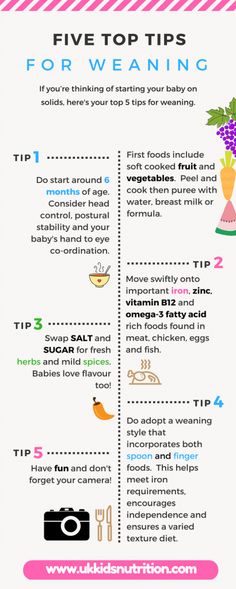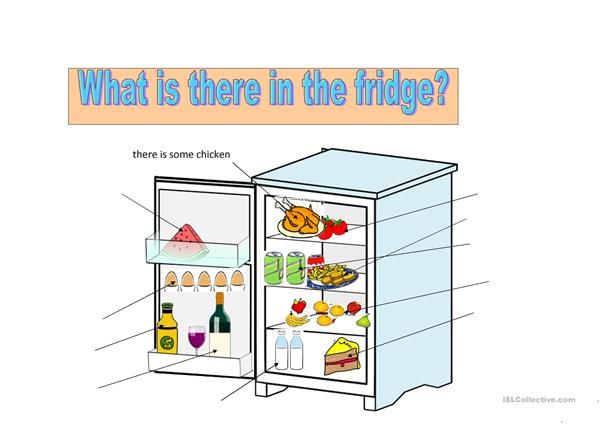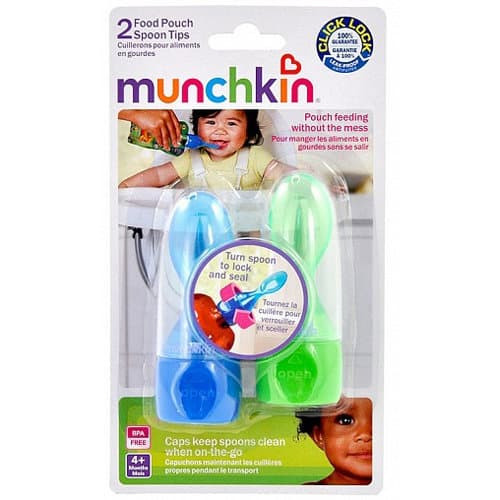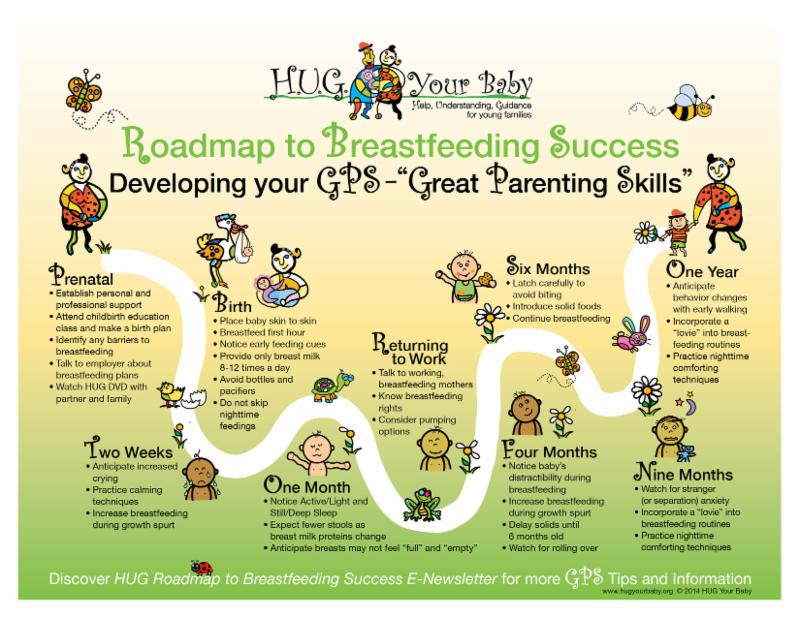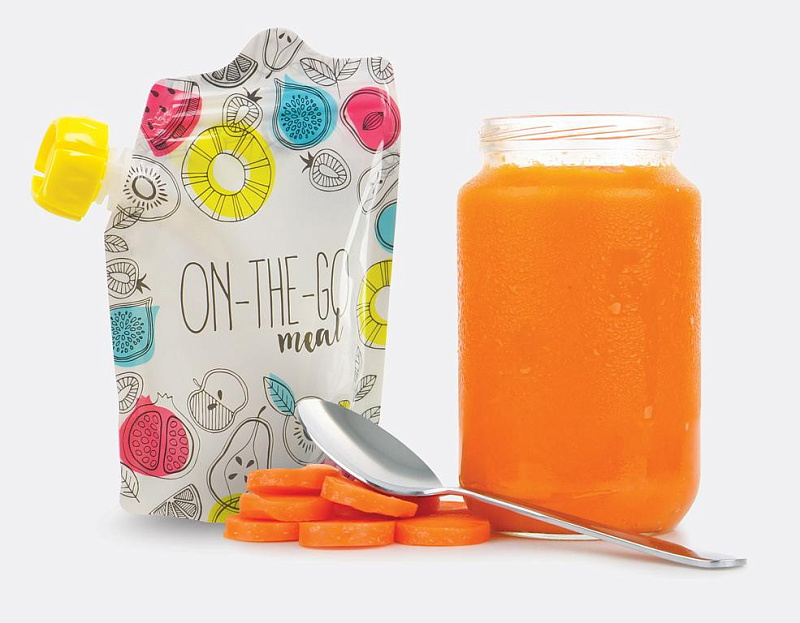Diabetic baby shower food
Baby Shower for a Very Cute Diabetic Mommy - Easy Recipes for Family Time
This post may contain affiliate links. Read my disclosure policy.
As I mentioned in a previous post, I volunteered to host a baby shower last week for one of my co-workers. She is also a sweet friend, so I was excited for the opportunity. It was only the second baby shower I've planned (the other was almost 3 years ago before I had this blog). This shower was more of a challenge, though, as the mom has gestational diabetes. This means, her diet is very limited...to basically meats, cheese, veggies and no (or very few) carbs.
The challenge was a welcoming one for me, however. There was no way I was going to make a bunch of food she couldn't eat. I did a web search and thought a bunch of recipes would pop up. Boy, was I wrong! There really isn't much out there on diabetic food for baby showers! I did come across a few message boards where many diabetic victims complained about their baby shower hosts not even planning a menu around their diets, and serving a bunch of delicious looking sweets they couldn't even touch! How awful!
Determined, I did a little more digging and finally came up with a few ideas. I'm hoping by posting these recipes in the next few days that others who are struggling with the same road-bump may find my site helpful. 🙂
Later, the mom told me she was excited she was able to take at least one of everything of the food. She even said she had seconds of the chicken salad! Stay tuned for the recipes, but for now, here is a list of the menu:
Chicken Salad Pita Pockets
Veggies - Carrots, Broccoli, Cauliflower, Celery, Grape Tomatoes
Roasted Garlic Hummus (store-bought)
Deviled Eggs
Sugar-Free Blueberry Cupcakes
Wheat Crackers
Summer Sausage
Cheese
Now, a little bit about the decorations. A friend gave me this idea for a diaper cake. Since the baby is a boy, and the father loves University of Michigan, I decided to go with the Wolverines color scheme.
Another blog I frequent gave me two more decorating ideas. This one is a Martha Stewart invention called Pom Poms. They take a little patience, but overall are very easy to make and serve as a festive decoration!
The other idea I found was this adorable way of hanging onesies for the mom to keep while serving as decorations for the party.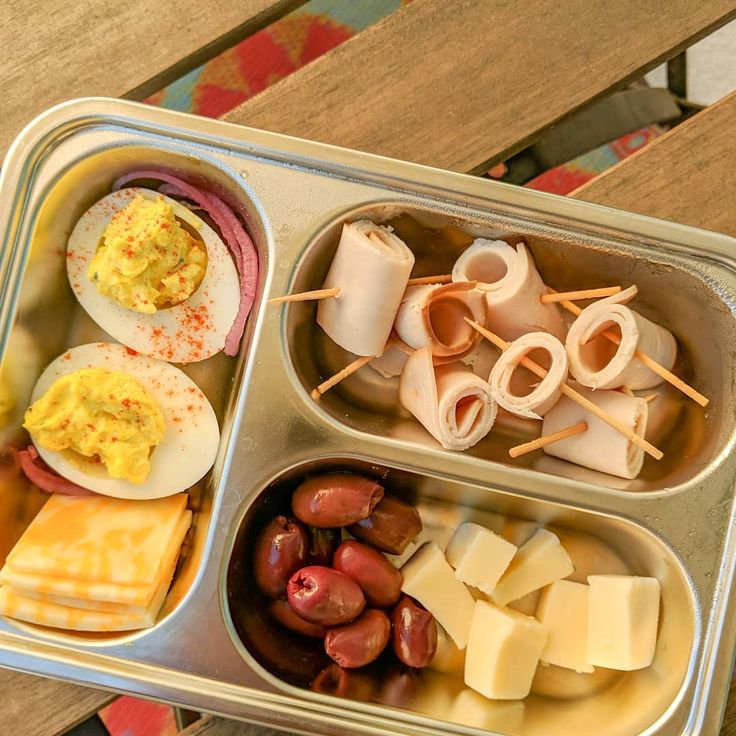 Everyone loved this!
Everyone loved this!
The shower was a huge success. I can't wait to host another one! Remember, I'll post the recipes soon...so make sure you check back!
Search
About Seeded At The Table
Thanks for visiting! We’re the Gladd family! We love donuts, Disney, LEGO and Jesus. Not in that order, of course. 🙂 Ben shares DIY wood-working projects and Nikki shares delicious recipes. You’ll also find a sprinkling of travel adventures and other family fun ideas!
Learn more about me →
Gestational Diabetes and Baby Shower Menu
Updated on May 30, 2010
T.C. asks from Dallas, TX
15 answers
Hi there -
I'm throwing a shower for a girl friend of mine who we just found out has gestational diabetes. The shower is this upcoming Saturday, June 5th and I am in desperate need of help planning the menu. She just found out she will be on insulin and I have not a clue of what she can and can't have.
She just found out she will be on insulin and I have not a clue of what she can and can't have.
We were planning on doing brunch style finger foods, etc - so I'm asking for suggestions or referrals. This is her second girl so it's a very laid back shower - but I still would like for it to be perfect.
AdvertisementWhat can I do next?
- Add yourAnswer own comment
- Ask your own question Add Question
- Join the Mamapedia community Mamapedia
- as inappropriate
- this with your friends
- WriteMessage T.C. T.C. a private message
- Read moreMore from that T.C. has written T.
 C.
C. - Browse local questions Questions
- Helpful?
Featured Answers
B.W.
answers from Dallas on
I am mom to a type 1 diabetic....'sugar free' does not mean carbohydrate free - often there are more...plus sugar alternatives are generally not advised for pregnant women as they can cause birth defects (and are in ALL items marked 'sugar free' - talk to her or have veggies, cheese, meat trays - the taco idea is great as long as you have corn tortillas as they are much lower in carb...good luck!
1 mom found this helpful
More Answers
M.H.
answers from Atlanta on
Google low glycemic diet. This is best for everyone but can actually prevent or control gestational or type 2 without medication. (Jenny Craig and Nutrisystems are now using it for their weight loss programs)
This is best for everyone but can actually prevent or control gestational or type 2 without medication. (Jenny Craig and Nutrisystems are now using it for their weight loss programs)
Generally speaking meats and cheeses are low glycemic. Most proteins are, however legumes are mostly medium glycemic. Most nuts are low glycemic. Green veggies like broccoli or cauliflower are good. Carrots are a no-no. Fruit platters with higer fiber are best but most fruits are okay. Pineapple is a no-no.....as you can see there is a general rule of thumb but the glycemic index does not have a hard and fast gage.
No bread or crackers unless they are spelt or sprout breads....Mayonnaise without sugar is okay (Dukes is the only one I know that doesn't add sugar) but store bought dressings are usually very high glycemic and loaded with high fructose corn syrup that is a killer!
Bacon, eggs, cheeses, veggies..you could do an omelet buffet too!
If you decide to do a low glycemic menu your friend will probably think you really went all out for her.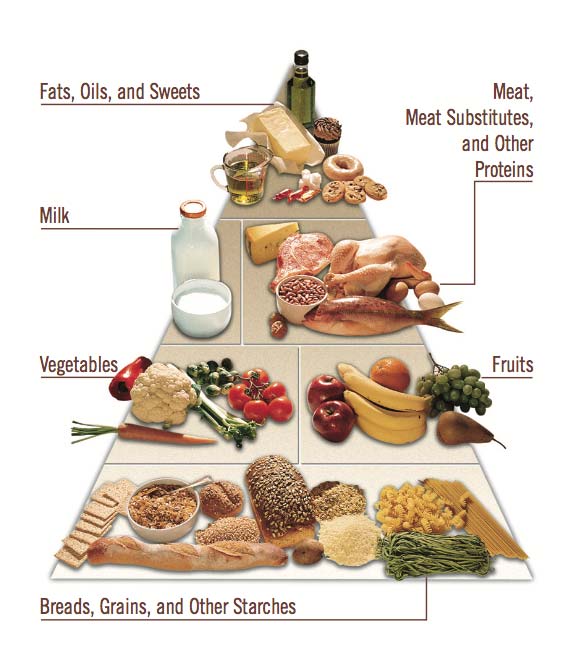 There are some really cool things you can do with different types of fruits and veggies as well as funky kinds of breads!
There are some really cool things you can do with different types of fruits and veggies as well as funky kinds of breads!
Hope this helps!
M.
2 moms found this helpful
J.B.
answers from St. Louis on
Veggie tray w/light dip, little lunch meat sandwiches, fruit tray
1 mom found this helpful
L.M.
answers from New York on
You can basically have the same menu you were originally planning.
The mom to be will want to limit sugar and carbs. But you also need to think of all your other guests. So you should consider some type of sugar free desert. Since it's brunch, consider a nice fruit platter. A veggie quiche is also a good choice. So are mini bagels and cream cheese (keep the cream cheese the low fat kind and don't get the special fruit flavored ones). It may not fit into your brunch menu, but if it does a veggie tray is a great choice.
Since it's brunch, consider a nice fruit platter. A veggie quiche is also a good choice. So are mini bagels and cream cheese (keep the cream cheese the low fat kind and don't get the special fruit flavored ones). It may not fit into your brunch menu, but if it does a veggie tray is a great choice.
Beverages... at most showers a punch is served. Make sure you have water available, add a few slices of lemon. Seltzer is another good choice. Unsweetned ice tea, the other guest can add sugar or sweet & low if they choose.
Good luck.
1 mom found this helpful
J.B.
answers from Wichita Falls on
I agree that you should run it by the mom-to-be. I am pregnant with our 4th, 2nd with gestational diabetes. For the last baby, my doctor okayed me to have what I wanted at my shower, within reason (I had a chocolate fountain with fruits!). Her doctor may be willing to do the same for a one-time event. Or the doctor may just have her inject more insulin to counter-act the extra carbs.
Her doctor may be willing to do the same for a one-time event. Or the doctor may just have her inject more insulin to counter-act the extra carbs.
If her doctor is not willing, then the eggs, cheese, meat, veggie diet with a few carbs available (crackers, low-carb tortillas, etc). She is supposed to have some, just not too many at one time.
If she is new to diabetes, she may be so confused, she may not know what is going to be okay and what isn't - it is frustrating...even when you do know what you can and cannot eat!
1 mom found this helpful
S.B.
answers from Los Angeles on
Consider asking your friend about this - she may want to have a menu for her friends that is broader than what she is limited to, as long as there is some food for her to eat as well.
1 mom found this helpful
C.T.
answers from Dallas on
I would sit down with her and plan the menu based on what she can eat and then have some of the items you want to serve, also. My brother is a diabetic and at family dinners, we have what he can eat along with foods that everyone likes, too. There are lots of diabetic cookbooks that can give you some dessert alternatives. Just because fruits are healthy , they do contain high amounts of sugar.
1 mom found this helpful
N.J.
answers from Dayton on
You could do something like a "bar" ( example taco bar) where everyone makes their own so they can have the choice what to put on their meal based on what they are allowed or not.
1 mom found this helpful
D.S.
answers from Tulsa on
when i had gestational diabetes I was told lots of protien and cheese items. lots of veggies. any crackers or bread make it whole wheat. use asparteme instead of sugar. aspartame doent have a nasty after taste like most diabetic sugars. I personally cant tell the diffrence. make all cheese and stuff make it 2% for all dairy. you can make like tuna wraps with wheat tortillas or whatever. go to all recipe.com and find a diabetic punch.
J.B.
answers from Dallas on
I like Jen's ideas. I was gestational, but not insulin was able to control with diet. Veggie great idea. You can also get sugar free cookies or even other desserts - fruit is another option.
M.S.
answers from San Antonio on
Ask her what would work well for her. I had GD and the only sugar okay-ed by my doctor was one piece of cake at my baby shower. I had dreams and longing for that one piece of cake. To this day it was the best tasting cake of my life.
J.L.
answers from Los Angeles on
I'm not sure about an entire menu besides the normal vegies, etc. I will tell you this...the best sugar-free candy out there....mmmm sugar free reeses peanut butter cups. You can find a huge selection of sugar free candy at walmart. They started making york pepermint patties, hershey kisses, but my fav's the peanut butter cups. You could also do a frozen/cold parfait with sugar free jello and light whipped cream. My parents were both insulin dependant, and I ate whatever they made, lots of it was low sugar and I never paid attention cause it didnt taste different. A lot of the cookies/pie's didn't taste right though lol. Good luck and have fun!
A lot of the cookies/pie's didn't taste right though lol. Good luck and have fun!
M.H.
answers from Dallas on
I cater a ton of parties and currently have gestational diabetes as well.
If you want to stick with brunch, I would try crust-less mini quiches. It's super easy, just use your favorite quiche recipe (minus crust) and pour into well-greased muffin cups (no liners!). Bake at same temp, but watch'em they obviously cook faster. High protein, low carb...yummo.
Serve these with a yummy green salad with vinaigrette or traditional veggie tray, a nice cheese platter, and mini yogurt and berry parfaits.
If you are working with a bakery ask them if the can do sugar-free petite-fours. If not arrange a tray of assorted sugar-free Russell Stovers candies (Walmart).
Good luck!
D.D.
answers from Dallas on
The very best solution would be to run the menu past the Mom-to-be. She knows what she can and cannot have PLUS she knows what her "trigger foods" are that she may want to avoid. When I had Gestational Diabetes my doctor sent me to a dietitian that taught me HOW to eat for my condition. She taught me about portion control and foods that could trigger a sugar spike. However, you friend is having to take insulin, so there could be some other issues. Many woman who are forced to go on insulin go into denial about their condition. They adopt an attitude that they can eat whatever they want and then just make it all better with a shot of insulin. Not true, and very dangerous. So ask your friend about the menu and help her to avoid her "trigger foods."
She knows what she can and cannot have PLUS she knows what her "trigger foods" are that she may want to avoid. When I had Gestational Diabetes my doctor sent me to a dietitian that taught me HOW to eat for my condition. She taught me about portion control and foods that could trigger a sugar spike. However, you friend is having to take insulin, so there could be some other issues. Many woman who are forced to go on insulin go into denial about their condition. They adopt an attitude that they can eat whatever they want and then just make it all better with a shot of insulin. Not true, and very dangerous. So ask your friend about the menu and help her to avoid her "trigger foods."
A.M.
answers from Dallas on
talk to her - they will probably send her to meet with a nutritionist. They sent me to do that and she gave me a list of what i could have and how many carbs i could have at each meal. the carbs get converted to sugar. i think it is ok to have things she cant eat or eat a lot of (for the others) as long as there are things she can eat there too. that is what we did at all my showers. we had lots of cheeses, veggies and proteins. you can also do small cake balls instead of a huge cake. there used to be a place in richardson called sugarless delight on campbell and they had all diabetic friendly foods.
the carbs get converted to sugar. i think it is ok to have things she cant eat or eat a lot of (for the others) as long as there are things she can eat there too. that is what we did at all my showers. we had lots of cheeses, veggies and proteins. you can also do small cake balls instead of a huge cake. there used to be a place in richardson called sugarless delight on campbell and they had all diabetic friendly foods.
report this ad
Related Questions
-
Glucose Intolerant - HELP with NO CARB Diet https://www.mamapedia.com/article/glucose-intolerant-help-with-no-carb-diet
15
-
Diabetic Friendly Thanksgiving https://www.mamapedia.com/article/diabetic-friendly-thanksgiving
11
-
Food Ideas for Baby Shower - Expecting Mom Has Gestational Diabetes https://www.
 mamapedia.com/article/food-ideas-for-baby-shower-expecting-mom-has-gestational-diabetes
mamapedia.com/article/food-ideas-for-baby-shower-expecting-mom-has-gestational-diabetes 14
-
What to Feed Mother in Law https://www.mamapedia.com/article/what-to-feed-mother-in-law
18
-
Diabetic Meals for Visiting Relative https://www.mamapedia.com/article/diabetic-meals-for-visiting-relative
18
-
What Can I Eat with Gestational Diabetes? https://www.mamapedia.com/article/what-can-i-eat-with-gestational-diabetes
26
-
Just Found Out I Have Gestational Diabetes https://www.
 mamapedia.com/article/just-found-out-i-have-gestational-diabetes
mamapedia.com/article/just-found-out-i-have-gestational-diabetes 20
Nutrition of children with diabetes mellitus
Diabetes mellitus is one of the diseases in which the main role in the treatment is dietary nutrition .
When the diagnosis is clarified, the parents of a sick child and he himself must firmly grasp that the basis of the treatment of the disease is a constant, strict adherence to a diet for diabetes prescribed by an endocrinologist. Adults should take this calmly (there is no other way out) and develop the same attitude towards the current circumstances in the child. nine0007
It is advisable to reorganize the diet of the whole family, making it so that the child does not feel isolated from the common table. In his presence, you should not eat dishes that are contraindicated for diabetics: ice cream, cakes, pastries, chocolate, sweets, jam, fatty pies, etc. Then he will not be tempted to openly or covertly feast on them.
Then he will not be tempted to openly or covertly feast on them.
The amount of protein-containing products in the diet of a patient with diabetes mellitus should be slightly increased - you can give milk, kefir, semi-fat and low-fat cottage cheese and dishes from it, unsalted low-fat cheese, eggs, lean meats (young beef, veal, trimmed meat pork, young lamb, rabbit meat, turkey, chicken) and fish. In the diet, you can include dietary sausage, boiled tongue, very healthy seafood. Seafood can be added to vegetable salads. nine0007
But you should not offer smoked products, including smoked sausage, canned meat and fish, caviar, sweet curds, cream; the use of sour cream, egg yolks is limited.
Fat content is reduced by 25%. It is recommended to use only butter and vegetable oil.
First courses for diabetics Preferably vegetarian, several times a week they can be cooked in a weak and low-fat meat or fish broth. nine0007
Meat and fish dishes are given to the child boiled, less often stewed, after boiling they are allowed to bake.
Children with diabetes are sensitive to the lack of sweets in the menu. Therefore, as a substitute for sugar, it is necessary to use such substitutes as sorbitol, xylitol, fructose. They are also used for the industrial production of certain products for diabetics (chocolate, sweets, cookies, cakes, lemonades on xylitol or sorbitol). But it should be borne in mind that replacing sugar with xylitol does not make the products absolutely indicated for children with diabetes, since they contain quite a lot of fat in addition to xylitol. nine0007
Children with diabetes mellitus limit the use of carbohydrate-containing foods and dishes such as bakery products made from wheat flour, potatoes, cereals. Porridges are given to the child no more than once a day, using whole grain cereals for their preparation. Products from rich and puff pastry are completely excluded from the diet. Rice, semolina and pasta should be used in limited quantities. Bread for diabetics is recommended only rye or protein-bran in an amount of not more than 100 g per day. nine0007
nine0007
Vegetables can be offered to a child without restrictions. Dishes from cabbage, carrots, beets, cucumbers, tomatoes, zucchini, pumpkins, eggplants, green peas, sweet peppers, green salad, radishes, rutabaga should be a significant part of the daily diet.
Vegetables can be used to prepare salads or vegetable dishes – boiled, stewed, baked.
Also widely included in the diet for diabetes are fruits and berries - unsweetened varieties of apples, black currants, gooseberries, plums, cherries, chokeberry, sea buckthorn. Occasionally, you can give your child citrus fruits (oranges, tangerines), strawberries, wild strawberries, raspberries. No more than 1-2 times a week, you can offer him a small slice of watermelon or melon. Grapes, bananas, figs, dates should not be consumed by a child. nine0007
Fruit can be consumed raw and in the form of compotes, jellies, mousses prepared with sugar substitutes.
When preparing meals for diabetics, it is necessary to limit salt, pepper, mustard. Fatty, spicy and salty sauces, sweet sauces are excluded from the menu. If the child does not have diseases of the liver, stomach, intestines, kidneys associated with diabetes, it is allowed to add a small amount of onion and garlic to food as a seasoning, and parsley is widely used.
Fatty, spicy and salty sauces, sweet sauces are excluded from the menu. If the child does not have diseases of the liver, stomach, intestines, kidneys associated with diabetes, it is allowed to add a small amount of onion and garlic to food as a seasoning, and parsley is widely used.
It is necessary to feed a child with diabetes mellitus 6 times a day (approximately every 2-3 hours) at the same time. Deviations in the diet should not exceed 15-20 minutes.
How to live with diabetes? When to contact an endocrinologist for an appointment
Every second Krasnoyarsk citizen heard that diabetes mellitus is not only a disease for those with a sweet tooth, but few understood the causes of this disease. Why diabetics need insulin, what danger lies in oatmeal for them, and why it is important to keep weight under control - in an interview with Margarita Khaernasova, endocrinologist at the Russian-Finnish Medical Center TERVE. nine0049
What kind of disease is diabetes?
Diabetes mellitus is a chronic noncommunicable disease. It is characterized by an increased level of glucose in the blood, which occurs either due to a complete deficiency of insulin, or as a result of its incorrect interaction with the body's receptors.
It is characterized by an increased level of glucose in the blood, which occurs either due to a complete deficiency of insulin, or as a result of its incorrect interaction with the body's receptors.
That is, when we talk about diabetes, we mean either type 1 diabetes mellitus, in which there is no insulin of our own, and we compensate for it, or type 2 diabetes, when our own insulin is present, but it does not work correctly at the level of hormones and receptors. : either the receptors do not see insulin, or there are few receptors. Or there is insulin, there is a lot of it, but the receptors do not feel it well. nine0007
There is no one to blame for type 1 diabetes, it is a genetic disorder. Most often it occurs in childhood, or immediately after birth, or before the age of 20. Now the detection bar for this type of diabetes has been increased to 35 years. But type 2 diabetes is multifactorial in nature, the threshold for diagnosing it is older people, from 45 years and older. Since such patients acquire a whole baggage of chronic diseases, body weight increases, and the level of physical activity decreases. nine0007
Since such patients acquire a whole baggage of chronic diseases, body weight increases, and the level of physical activity decreases. nine0007
“The question is in the tactics of treating diabetes: either we compensate for the lack of insulin, or we use drugs that will improve the mechanisms of sensitivity to it in the body, or we will remove excess sugar in the blood through urine”
In people with obesity, the risk of developing diabetes in several times higher. For example, a person is not overweight, but has a parent with type 2 diabetes. And another, for example, was diagnosed with obesity, and his parents did not have the disease. So the likelihood of developing diabetes is higher in the second case. nine0007
Genetics influence, but lifestyle outweighs on this scale. If a person is active, eats according to his caloric content and consumes as much as he spends, then, despite the presence of relatives with diabetes, he is less likely to develop such an ailment. And in a person who has gained excess over 5 or 10 years and is far from any level of physical activity, diabetes will develop with a high degree of probability. The only question is the timing - when the body gets tired to compensate for the increase in excess body weight. nine0055 “Either you drag or you drive at high speed”
The only question is the timing - when the body gets tired to compensate for the increase in excess body weight. nine0055 “Either you drag or you drive at high speed”
By itself, adipose tissue is quite hormonally active and releases a large amount of hormone-like substances. Food enters the human body and breaks down into fats, proteins and carbohydrates. In order to maintain a constant level of glucose in a certain interval, a compensatory organism works - the pancreas secretes insulin in its mode. When a person overeats, the pancreas releases extra insulin. And when there is excess body weight, then it is harder for insulin to work, because sensitivity to it decreases. nine0007
The cells of the body do not feel this insulin well, because there are fewer of them. Until insulin reaches the cells through the fatty layer, time will pass, and sugar is no longer normal, the body again increases insulin production in an avalanche mode. Excess body weight is a certain ballast. When there is no fat layer, nothing interferes with the calm communication between receptors and insulin with glucose.
When there is no fat layer, nothing interferes with the calm communication between receptors and insulin with glucose.
I would compare this process to a traffic jam: either you drive a car for a long time and “drag” to your destination, or you drive at a high speed on the highway and manage to do everything quickly when there is no obesity. nine0007
How do people react when they find out they have diabetes?
When you tell a person that he has type 1 diabetes, you immediately explain to him all the further alignment. At first, the patient simply does not believe that he has such a disease, because you start talking about insulin, the need for lifestyle changes, and the person feels fine.
With people who have type 2 diabetes, it's a little easier. A person was often warned in polyclinics about such a development of events, he knew about the risk factors, was previously warned that this could happen, and therefore perceives the situation more calmly.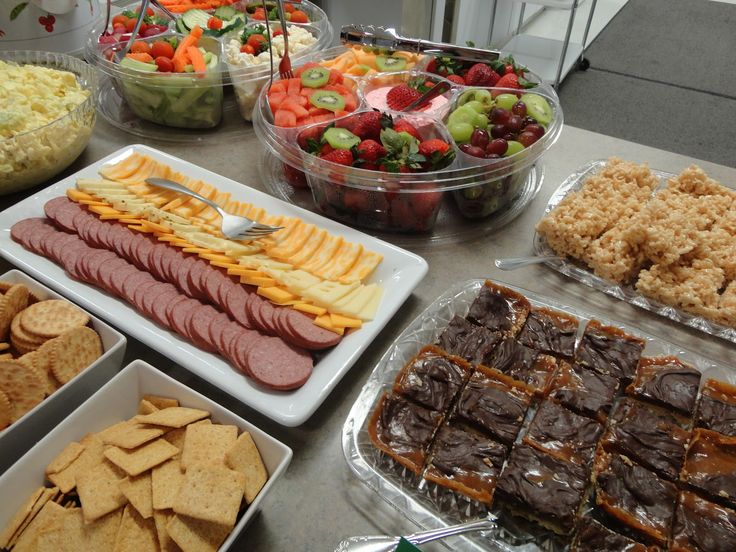 Of course, all patients get upset. The man lived, did not take any medications, did not really think about what he was eating. And now the doctor told him that he had diabetes and everything needed to be changed. Tragedies, tears and tantrums are rare, mostly in women. Men are generally more logical and less emotional, and when they learn about an illness, they immediately ask - what to do? nine0007
Of course, all patients get upset. The man lived, did not take any medications, did not really think about what he was eating. And now the doctor told him that he had diabetes and everything needed to be changed. Tragedies, tears and tantrums are rare, mostly in women. Men are generally more logical and less emotional, and when they learn about an illness, they immediately ask - what to do? nine0007
“Some patients, when they find out that they have diabetes, put themselves in a tight rein. They control their diet and physical activity so well that we reduce the doses of drugs to a minimum. There are few of them, but they are there – they are very disciplined people”
The second category of patients - trying, but from time to time dropping treatment. The first time after they meet with the doctor, everything is fine, and then, after a year, they come back with a less rosy picture. It's simple: people are tired, burnt out. Most often this is an age contingent - everyone has their own eating habits, their own way of life. Patients who are tired of controlling sugar and following prescriptions come with decompensation. nine0007
Patients who are tired of controlling sugar and following prescriptions come with decompensation. nine0007
There is a third category of people: they are initially negative, because they will have to take pills, so they choose not to do anything. We meet much more often than we would like, because they come with constant decompensation. Doctors have their hands tied: doctors do everything for their patients - within the limits of what is possible, and a person with diabetes does not want to change anything. We can't let sugar hang around, so we resort to insulin therapy. But here, too, difficulties arise, because patients do not want to plunge into active therapy. nine0055 Such people consider insulin to be a narcotic substance: “If you get hooked on insulin, you will never take it off later, what will I do then?” is a common phrase at receptions. There are even those who, in principle, refuse treatment, and then they are brought in an ambulance. And there no one asks them whether to put insulin or not. They bring themselves to a life-threatening state.
They bring themselves to a life-threatening state.
"Doshirak" with a bun for breakfast....
I had one patient. I couldn't figure out why his sugar spiked so much. I asked him to keep a food diary. I usually always recommend doing this, but here I strongly suggested that a person vigilantly write down what he eats in a calorie counting application for a while. The patient brought a food diary, and there - "Doshirak" with a bun for breakfast. And I still can’t understand why the sugar is dancing. And they ask me - why the pills do not work? nine0007
A patient with type 1 diabetes puts insulin on the amount of carbohydrates that he consumes, but only at first. A person first forms his food basket and understands his “blood sugar trends”, that is, he observes how sugar behaves with a certain amount of carbohydrates eaten, calculates how much insulin is required for them. Then the patient adapts and orients himself in food calmly.
“Again, things are somewhat simpler with a person with type 2 diabetes. He has his own secretion, it is important to control the size of portions and take into account the quantity and quality of carbohydrates. You need to understand what fast and complex carbohydrates are. nine0007
He has his own secretion, it is important to control the size of portions and take into account the quantity and quality of carbohydrates. You need to understand what fast and complex carbohydrates are. nine0007
A person has a glucometer and knows how much blood sugar it costs to eat a piece of cake. He measures sugar before and after taking it, and then looks at how much sugar has risen. I have patients who eat chocolate in moderation but can't eat oatmeal because sugar skyrockets. The work of the gastrointestinal tract is individual for everyone, so a person with type 2 diabetes becomes a researcher of himself. Literally two weeks he constantly controls his diet, and then the control turns into a routine, it happens once or twice a week at different times - there is no need to constantly count calories. For some patients, we recommend calculating the calorie content of servings using the plate or palm method - this often works. nine0007
Why do I need an insulin pump?
There are several ways to administer insulin, using pens and an insulin pump.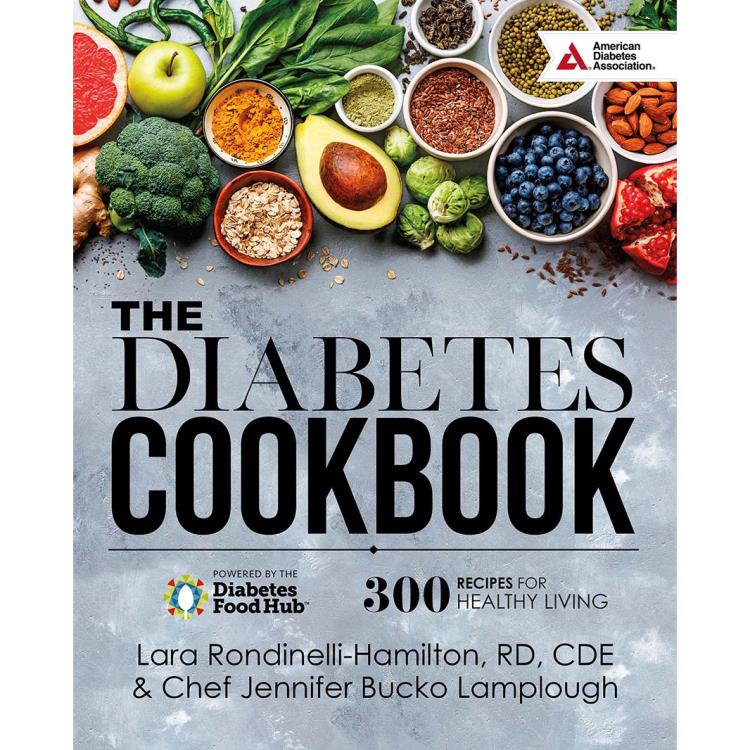 The latter is not always needed and not for everyone. Most often it is used by patients with type 1 diabetes. For them, it is more convenient to live with such a device. This is possible when the patient is ready to learn how to work with it, because it is the same as any gadget - if you give an elderly person the latest smartphone and an old phone, it is unlikely that he will delve into the technical complexities and nuances. nine0055 An insulin pump does not replace the pancreas, it delivers a certain amount of insulin to a person at a constant rate. The person adjusts this feed rate in the settings. Therefore, it is very important to understand what a carbohydrate ratio and insulin sensitivity factor are, for example. You need to be able to navigate in certain situations. For example, the patient's insulin supply has ended, and for some this can play a critical role. A person whose sugar does not hold on its own noticed this after 5 hours - hyperglycemia is rapidly developing. If the patient noticed in time, then he can take some independent steps, and if not, then there is a threat of an emergency.
The latter is not always needed and not for everyone. Most often it is used by patients with type 1 diabetes. For them, it is more convenient to live with such a device. This is possible when the patient is ready to learn how to work with it, because it is the same as any gadget - if you give an elderly person the latest smartphone and an old phone, it is unlikely that he will delve into the technical complexities and nuances. nine0055 An insulin pump does not replace the pancreas, it delivers a certain amount of insulin to a person at a constant rate. The person adjusts this feed rate in the settings. Therefore, it is very important to understand what a carbohydrate ratio and insulin sensitivity factor are, for example. You need to be able to navigate in certain situations. For example, the patient's insulin supply has ended, and for some this can play a critical role. A person whose sugar does not hold on its own noticed this after 5 hours - hyperglycemia is rapidly developing. If the patient noticed in time, then he can take some independent steps, and if not, then there is a threat of an emergency. nine0007
nine0007
18-year-old daughter of Kate Moss - Lila - walked on a joint show of luxury brands Fendi and Versace with an insulin pump on her thigh: the girl has type 1 diabetes.
The pump is not suitable for patients with type 2 diabetes. Such people generally avoid insulin therapy - and are very afraid of it. They are prescribed insulin therapy most often in emergency situations when it comes to resuscitation. Or in situations where a person does not follow a diet, and all the drugs have already been tried, only insulin therapy remains. Alas, there is still an opinion among adults that there is a magic pill that will completely reverse the process - body weight will decrease, blood sugar will be normal. But it's not. nine0007
What are the worst effects of diabetes?
These are diabetic retinopathy (severe eye disease), decreased vision up to blindness, diabetic foot (the appearance of deep non-healing ulcers on its skin), changes in the skeletal system against the background of constant hyperglycemia, poor compensation, which can lead to amputation of the lower extremities, polyneuropathy (multiple lesions of peripheral nerves). In general, the disruption of the nervous system itself can manifest itself in different ways - in the form of a constant pain syndrome in the arms and legs, numbness, burning, ulcers can also appear, because a person does not feel the places of excessive pressure of shoes on tissues. In the extreme degree - kidney damage, high blood pressure, hemodialysis ... But, fortunately, there are very few such patients. nine0007
In general, the disruption of the nervous system itself can manifest itself in different ways - in the form of a constant pain syndrome in the arms and legs, numbness, burning, ulcers can also appear, because a person does not feel the places of excessive pressure of shoes on tissues. In the extreme degree - kidney damage, high blood pressure, hemodialysis ... But, fortunately, there are very few such patients. nine0007
How to protect yourself from diabetes?
If you notice a combination of such symptoms as excess body weight, constant dry mouth, frequent urination both day and night, prolonged healing of wounds, furunculosis, this is a reason to contact an endocrinologist. Or you found that you are losing body weight, although you don’t change your diet - you eat, but you can’t eat. These are also “calls” for visiting a specialist.
A healthy person needs to monitor the quantity and quality of food consumed, eat moderately, when hungry, and not overeat. Monitor your own body weight. You need to eat a balanced diet, do not bypass seasonal fruits, berries and vegetables. Be sure to ensure that fiber is in the diet. nine0007
Monitor your own body weight. You need to eat a balanced diet, do not bypass seasonal fruits, berries and vegetables. Be sure to ensure that fiber is in the diet. nine0007
It is important for any person to know what free sugars are. We must control them. This is the sugar that manufacturers add to the product - in the sauce, for example, because it is a good preservative. I would advise you to look at what this or that product consists of, now they write the composition everywhere. Not always those products that say “sugar-free” are really without it. They can add fructose, sucrose, starch. It's all carbs and sugars.
Ideally, plan your meals, that is, at least know approximately what you will eat for breakfast, lunch and dinner, so as not to overeat and not be hungry. It is also very important to be socially and physically active in the long term - find yourself any activity that you like to do regularly, then the likelihood that you will suddenly find out about your own type 2 diabetes is extremely small.

